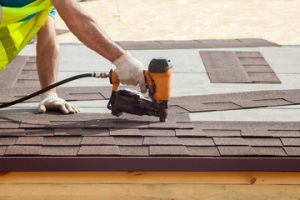Restaurant les Ambassades Cote-Vertu brings people together in the most natural way. It is a place where meals meet memories. Beyond serving food, it becomes an extension of culture and creativity. Every plate tells a story, every detail adds to the experience.

The modern restaurant has evolved into more than a dining space. It reflects innovation, sustainability, and emotion. People no longer visit just to eat but to feel connected to what’s served. The way dishes are presented mirrors how society values artistry in simplicity.
Design plays a big role in shaping the restaurant experience. Soft lighting and thoughtful arrangements influence how people feel. Every seat offers a different perspective of warmth and comfort. The goal is to make guests stay longer, talk deeper, and savor slower.
Technology has also changed how restaurants operate today. From digital menus to seamless payment systems, convenience drives satisfaction. But even with these advancements, the heart of hospitality remains human. A genuine smile still makes the biggest difference.
Restaurants are also shifting toward more ethical choices. Many now focus on reducing waste and sourcing responsibly. This silent revolution has made dining more meaningful. People appreciate food not just for taste but for its story.
The creativity behind a restaurant concept sets it apart. Some blend traditional techniques with modern flair. Others experiment with textures and visual appeal. These approaches create unforgettable impressions that stay long after the last bite.
Ambiance defines how guests perceive their meals. The sound of gentle music or laughter enhances appetite. The rhythm of clinking glasses adds emotion to the moment. Dining becomes a performance that everyone participates in.
Behind every restaurant lies a team of passionate individuals. Chefs, servers, and managers unite with a single purpose. Their harmony turns an ordinary evening into something exceptional. This teamwork becomes the unseen ingredient that defines success.
The connection between comfort and curiosity drives returning customers. People want both familiarity and surprise in their meals. A good restaurant balances the two effortlessly. It becomes both a haven and a discovery.
Social trends have influenced how restaurants shape their menus. Health consciousness and plant-based choices have risen. Customers look for dishes that align with their values. The best restaurants respond with sincerity rather than mere adaptation.
Outdoor and open-kitchen concepts have gained attention. Guests love seeing how their food comes to life. Transparency builds trust and admiration. It blurs the line between preparation and presentation.
The emotional pull of a restaurant is undeniable. The first visit may be about taste, but the second is about feeling. Every sensory element contributes to memory. That’s what keeps guests coming back without hesitation.
Restaurants have become community spaces where stories unfold. People celebrate milestones, seal friendships, and even find solace there. The environment becomes a silent witness to life’s transitions. It feeds both the body and the spirit.
Sustainability has redefined how restaurants plan their operations. Using seasonal ingredients minimizes waste while enhancing flavor. This approach encourages creativity in the kitchen. It also connects diners more deeply with nature’s rhythm.
In today’s fast-paced world, slow dining is making a comeback. People crave mindful eating experiences over quick consumption. Restaurants that promote presence rather than speed capture hearts. They remind guests that meals deserve time and attention.
Innovation also thrives in the unseen details of service. Subtle gestures, like anticipating a guest’s need, elevate experiences. This quiet hospitality sets memorable restaurants apart. It’s not just service—it’s an emotional exchange.
Lighting and color schemes affect how guests perceive flavor. Warm tones enhance appetite, while cool hues invite calmness. Every aesthetic decision influences satisfaction unconsciously. Restaurants treat these details like silent language.
Music selection can transform the entire dining mood. A carefully chosen playlist complements the rhythm of service. It keeps conversations alive and energy balanced. It’s an art that enhances the overall sensory harmony.
Culinary experimentation is expanding beyond traditional expectations. Chefs use unexpected pairings to excite curiosity. Dishes become expressions of innovation and emotion. This fusion of imagination and flavor defines the next era of restaurants.
Even the smallest restaurants can create grand experiences. Space doesn’t limit creativity when purpose is clear. Intimacy often leads to stronger connections between guests and hosts. It’s proof that quality always surpasses quantity.
Restaurants are also redefining inclusivity in dining. Everyone deserves an atmosphere that feels welcoming and kind. Accessibility and diversity are no longer options—they’re priorities. The best establishments understand that hospitality embraces all.
The emotional design of menus reflects thoughtful psychology. Descriptive wording enhances appetite and expectation. Simplicity often outperforms complexity in communication. Clarity builds anticipation without overwhelming the senses.
As dining habits evolve, personalization becomes the new luxury. Restaurants remember preferences and treat guests as individuals. Small gestures of recognition transform experiences. The familiar warmth keeps loyalty alive.
Restaurants thrive not only on taste but on connection. They mirror how people express culture and belonging. In every dish lies a reflection of time and intention. This shared experience becomes a universal language of care.
The pandemic changed how people perceive restaurant spaces. Safety, spacing, and comfort gained new meaning. Restaurants learned to adapt without losing authenticity. This resilience strengthened their emotional bond with communities.
Pop-up and temporary dining concepts are shaping new culinary adventures. They invite curiosity and create urgency. Guests enjoy the thrill of impermanence. It adds excitement and exclusivity to every experience.
Technology now allows for immersive restaurant storytelling. Some use projections or scents to heighten sensory interaction. These innovations turn dining into an artistic event. It’s where technology meets emotion seamlessly.
Restaurants have also become platforms for local creativity. Artists, musicians, and designers often collaborate with them. This synergy transforms spaces into living galleries. Every visit becomes a celebration of expression.
Emotional storytelling drives the essence of modern dining. People remember stories more than ingredients. A restaurant that connects food with meaning builds loyalty. It becomes part of someone’s personal narrative.
Comfort food continues to hold timeless appeal. It reminds people of safety and nostalgia. Restaurants that elevate these classics bridge past and present. They make the familiar taste new again.
The relationship between chef and diner has become more transparent. Guests value authenticity over perfection. They appreciate imperfections that show humanity. This raw honesty builds stronger trust than polished formality.
Restaurants also play an important role in mental wellness. A welcoming meal shared with others eases loneliness. The warmth of service becomes emotional nourishment. It reminds people that they belong somewhere.
Lighting candles, pouring water, and serving dishes form a ritual. Each gesture reflects respect and mindfulness. Restaurants that honor these rituals stand out naturally. They treat dining as a shared art, not a transaction.
Local sourcing and cultural sensitivity are shaping a new standard. Chefs explore ingredients with respect for heritage. The result is cuisine rooted in awareness and empathy. It celebrates diversity through flavor and understanding.
Minimalism has gained influence in restaurant design. Simpler spaces focus attention on food and conversation. The absence of clutter enhances calmness and clarity. It teaches that luxury can live in restraint.
Restaurants today are shaped by more than trends. They are shaped by emotion, awareness, and shared purpose. The experience transcends taste to touch every sense. It is both nourishment and narrative intertwined.
Every restaurant carries an invisible rhythm that defines it. From the pacing of courses to the tone of greetings, flow matters. A well-timed service feels like music without sound. It guides the guest’s journey naturally from start to finish.
Outdoor dining continues to grow as people crave openness. Natural light and fresh air create comfort beyond walls. It blends nature and cuisine beautifully. The result is relaxation that feels organic and whole.
Restaurants also inspire personal creativity at home. Guests replicate their favorite dishes or dining rituals. It extends the restaurant’s influence beyond its walls. Inspiration becomes the mark of a truly great experience.
The best restaurants don’t compete—they inspire each other. They push the boundaries of what dining can be. Their evolution reflects humanity’s desire for beauty and connection. Each one becomes a small universe of flavor and feeling.
Ultimately, a restaurant is a stage of shared emotion. It’s where celebration and comfort coexist gracefully. Every visit adds a chapter to an ongoing story. And in that story, both the meal and the moment become unforgettable.








